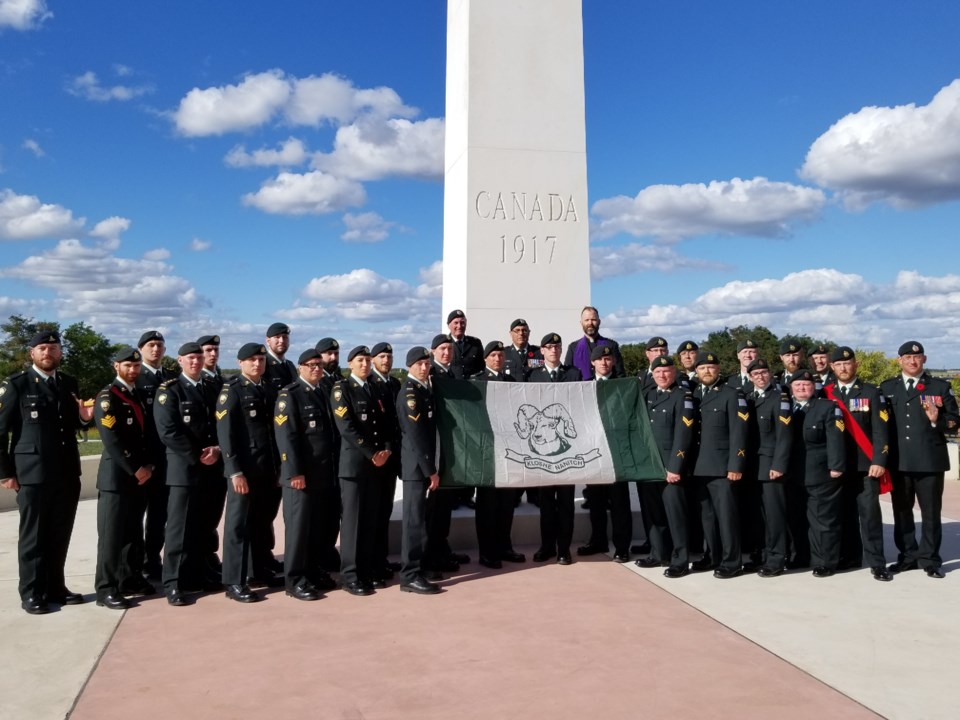It's known as Canada's Forgotten Battle.
Over 11 days in August 1917, three divisions and one reserve of Canadian troops took what became known at Hill 70 near Lens, France, fending off five German divisions in the process.
The battle took place four months after the Battle of Vimy Ridge, regarded as the day Canada became a nation and so, has overshadowed Hill 70.
But thanks to an eight-year campaign that raised $12.5 million in donations and gifts in kind - almost all of it from private sources - a memorial is now in place to commemorate the battle.
On Oct. 2, more than 30 Rocky Mountain Rangers were among those who attended a day of commemoration to formally open the memorial and also to remember the sacrifices of one of their own.
Private Frederick Lee was a member of the Rocky Mountain Rangers' forerunner, the 172nd Battalion.
Lee, who grew up in Kamloops and was a Canadian-born soldier of Chinese heritage, died in the battle.
"At the time, Canada didn't recognize Chinese Canadians as citizens," noted Adam Davey, an officer in the Rangers' Bravo company in Prince George. Alpha company is based in Kamloops.
At the centre of the Hill 70 Memorial is a striking white limestone obelisk, overlooking an ampitheatre partly surrounded by an elevated walkway. It is named after Lee, who came to symbolize the 1,877 Canadians who died in the battle.
Following the main ceremony, a Ranger honour guard marched along that path and to a pair of park benches made possible through donations from the Rangers' retired members.
"The whole site is quite fascinating," Davey said. "The Frederick Lee walkway is supposed to resemble the trenches, so it's concrete on either side and as you're walking up this hill, it then opens up to the cenotaph at the top."
For Davey, who served in Afghanistan, the walk brought home something the history books simply cannot deliver - how daunting the task was for the troops.
"As an infantry officer, I'm looking at the ground and thinking 'wow, it would've been nearly impossible to take the position tactically,'" he said. "It was certainly quite emotional."
But take it they did, and then fended off 21 German counterattacks after doing so.
Much of the credit has gone to a Canadian-born commander – Arthur Currie.
By then the portly real estate speculator from Victoria had gained the respect of the high command as the chief planner for Vimy and had been promoted to lieutenant general and given command of the Canadian Corps.
He had then been ordered to attack and capture Lens, a small industrial city north of Vimy, to divert the Germans from reinforcing Ypres.
Currie refused and had he been a newly-minted British lieutenant general, he probably would have been sent home, historian John Cowan said in an account posted at Hill70.ca. But he was not and instead, his superiors agreed with a proposal to take the high ground outside the city.
Interestingly, Currie's ability to evaluate the ground, "learned from his real estate days," would prove decisive.
But not without cost as the attack cost the Canadians some 3,500 casualties and a further 2,200 in the German counterattack. The count for the Germans is unknown but believed to have exceeded 20,000.
"The successful battle for Hill 70 was the watershed," Cowan said. "After that, the Canadian Corps was viewed as a national allied army, and Currie as a national force commander."
Currie brought on a "distinct Canadian way of war," in which he made sure the troops were more thoroughly equipped. During the period known at the 100 Days, the Canadian Corps defeated 47 German divisions, one more than did the Americans while taking half the casualties and using twice the number of artillery shells.
"Currie’s slogan was “Pay the price of victory in shells, not men,'” Cowan said.



